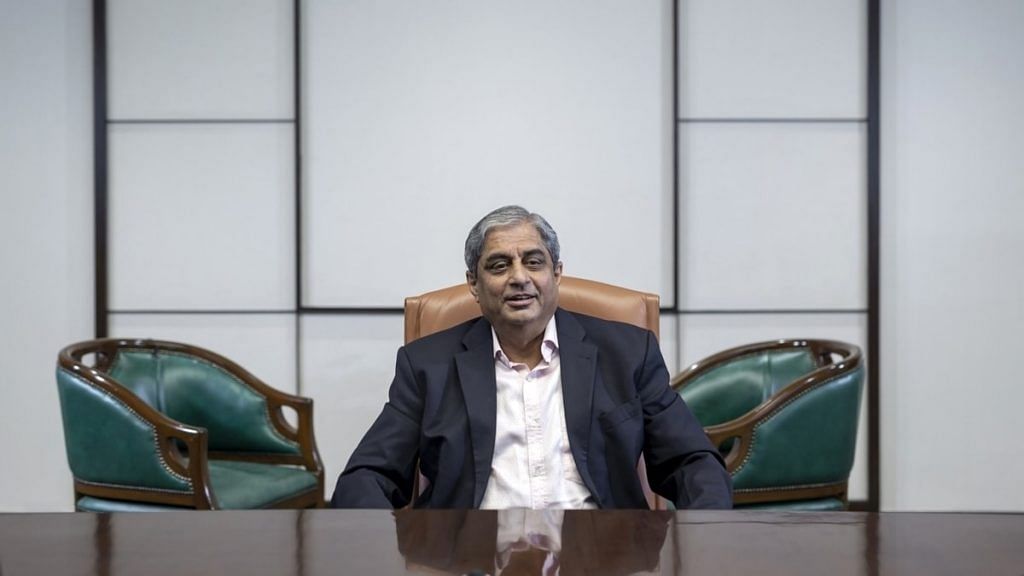New Delhi: Judged by “swagger and paypackets”, Wall Street’s big firms are contenders for the world’s most impressive bankers. Based on clout, it is China’s state lenders with The Agricultural Bank of China managing “23,000 branches and half a million staff”. But if judged on the hardest of all criteria — “creating something from nothing and delivering long term shareholder returns while supporting the economy” — it is the former HDFC Bank chief executive, Aditya Puri, who comes out on top, The Economist wrote in its latest edition.
Launched in 1994, HDFC Bank is now the world’s 10th most valuable bank and has surpassed Citibank and HSBC in worth standing at about $90 billion.
Since its inception, the bank has reached far and beyond into India’s “mega-cities and rural backwaters”.
With its “unlikely formula” of serving “consumers and firms” and steering clear of “wilder reaches of investment banking and foreign adventures” that has resulted in its spectacular performance, The Economist has deemed the not-so-well-known Aditya Puri who manned the HDFC Bank to success as the “world’s best banker”.
The weekly arrived at this conclusion after comparing total shareholder returns of Puri during his tenure and that of chief executives of world’s top 50 banks.
“Mr. Puri has delivered cumulative returns exceeding 16,000 per cent over the quarter century since his bank went public,” The Economist noted, adding that this is “not wholly a function of the length of Mr. Puri’s tenure”.
Comparing the performance of CEOs of the world’s top eight banks including China Merchants Bank, DBS, JPMorgan Chase, PNC, Bank Central Asia and HDFC Bank, Puri’s firm tops the list of total returns percentage at 16,187.
This is followed not so closely by China Merchants Bank at 345 and JPMorgan Chase at 265.
On average annual total returns percentage, HDFC Bank is second only to China Merchants Bank (23) at 22. On absolute value created in billion dollars, HDFC Bank ranks fourth at 83, a category topped by JPMorgan Chase at 388.
Also read: ‘Landmark’ Rs 1 lakh cr monthly GST was first crossed in April 2018, but only 11 times since
Puri’s ‘secret sauce’
At a time when almost all Indian banks were state-run and rife with corruption, Puri had returned to India in 1994 from Malaysia where he was working at Citibank when he received a call from the head of Housing Development Finance Corporation (HDFC), Deepak Parekh.
At less than half his Citibank salary, Puri setup HDFC — a feat he credits his wife Anita for.
The Economist broke down Puri’s “secret sauce” into three elements — his “clear vision, microscopic attention to detail, blunt speaking and a knack for retaining talent”; his strong belief that India firms and consumers are “consistent money-makers” resulting in one of India’s largest cash-machine and credit card networks; finally, while Puri himself doesn’t own a mobile, HDFC Bank’s fast increasing investment in technology has resulted in speedy loan approvals and rigorous credit systems.
HDFC Bank has been a “source of as much as a quarter of new credit in India since 2017 without any signs of its standards slipping or bad loans rising”, Credit Suisse’s Ashish Gupta told the weekly.
The bank’s gross non-performing asset stood at 1.3 per cent of total assets “in the year to March”, compared to 6 per cent for ICICI Bank and 2.3 per cent for Kotak Mahindra Bank, according to investment bank Jefferies.
Also read: India’s economic recovery will be hit if banks aren’t recapitalised, former RBI chiefs warn
